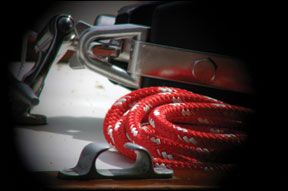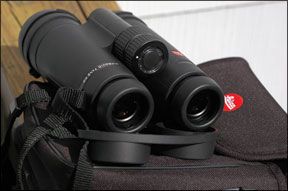Sight is the mariners most important sense, and tools that enhance visual acuity can be worth their weight in gold. Leicas newest addition to its line of premium-priced, high-quality optics delivers brilliant viewing-and at $2,200 costs nearly its weight in gold-but for the sailor preferring an uncompromising pair of binoculars, the German-made Ultravid 7×42 HD is a navigators dream. Although they lack a compass, they do afford camera-lens quality resolution and their low-light gathering ability is truly astounding. The ergonomic two finger-focus adjuster, water-tight armored coating, and extendable eye cups round out their superior design.

Photos by Ralph Naranjo
Their most significant downside is obviously their cost. The hefty price tag puts them out of reach for many, including PSs editors, but their high quality and superior performance have earned them a spot on our dream-gear list.
Costly fluorite lens elements and high-quality roof prisms are ground to tight tolerances. The fringe benefit of their design is best measured in dawn and dusk low-light situations, when they allow a user to pick out individual lobster pots, read navigation mark numbers, and even see the froth on a fringing reef-features that may go unseen with lesser-quality optics. The exit pupil diameter is large enough to allow full-frame viewing while wearing eyeglasses, and the dial-a-diopter adjustment can be accomplished with a simple pull and twist of the user-friendly focus knob. Attached caps on both ends of the Ultravid protect the lenses when the binoculars are not in use.
Much of the improvement in the Ultravid line comes from new optical coatings that increase light transfer through the fluorite lenses and roof prisms, lessening chromatic aberration and flare. The external coating on the front lens element sheds fog and water droplets better than any optic we have seen. The optical components are sealed in a nitrogen-charged atmosphere, guaranteed to handle submersion to 5 meters.

The magnesium-alloy body is rugged, yet light. At 1.70 pounds, the Ultravids have nearly half the heft of the Fujinon FMTRC-SX, our Best Choice among high-priced 7×50 binos (November 2006 and April 2009), but the $700 Fujis have a compass. We found the Ultravid 7×42 binoculars to be the right compromise when weighing the effects of magnification, boat motion, and field of view. Leicas optical quality was outstanding, and it delivered sharper images than most 7×50 binoculars. The decrease in the field of view was minor and certainly didnt inhibit their ability, even in low-light and overcast situations.
Today, good quality binoculars can be found at the lower end of the three-digit scale. (Our August 2006 test tapped the $300 Nikon Ocean Pro as Best Choice in the low-priced group.) But to really tap into the best of engineering and optical design, the price quickly rises into the low four-figure column. Whats gained by the added expenditure is both optical quality and engineering detail. The latter relates to how well the lens elements are held in place and how well they tolerate heating and cooling, humidity and pressure changes, not to mention the inadvertent bumps and minor impacts of rugged use.
Bottom line: If youre the type of sailor who would consider adding a Rolex to his kit, then we recommend investing the money instead in these high-quality binoculars, a much more practical navigational tool. However, if you have a budget like our editors, file this review in your “when I win the lottery” gear locker.




































